Pig prices do not rise, breeding profits are squeezed how to do? This farming model can reduce the cost by 180000.
According to pig farm power network "power pig price" statistics, today's national average price of three yuan live pigs is 7.55 yuan/catty, down 0.01 yuan/catty compared with yesterday, according to the current pig price now a pig can profit how much? According to the judgment of Muyuan and New Hope on the pig price in 2018, the pig price in 18 years will show a slow downward trend. Pig raising wants to make more money, only to control the cost, but how to control the cost?
1. Each pig can still make more than 300 profits
We calculate an account, from 30 jin to 250 jin to see professional fattening households according to the current pig price each pig can earn how much money?
Purchased piglets (30 jin): calculated according to the average price of piglets this year of 37.1 yuan/kg, the price of piglets is 37.1×15=556.5 yuan/head;
Feed price: calculated according to the feed ratio of 3.0, it is estimated that 3× (250-30)=660 catties of feed will be eaten, and 1.4 yuan/catty of feed will be estimated, totaling 924 yuan;
Daily management: general vaccine 15 yuan/head, medicine 10 yuan/head, management labor about 40 yuan/head.
The cost of a pig: 556.5+924+15+10+40=1545.5 yuan
A 250 jin pig, according to today's price of 7.55 yuan/jin, can currently sell: 250×7.55=1887.5 yuan
To sum up, for professional fattening households, at present, a pig can earn: 1887.5-1545.5=342 yuan
Counting the elimination rate, pig farms can generally be controlled at about 98%, that is, the cost of 100 pigs will be about 10 yuan more than the above 1545.5 yuan/pig.
Profit 300 yuan/head for farmers, although it is earning, but plus environmental protection tax, epidemic disease and so on basically deal with the break-even point or even loss state. As far as environmental tax is concerned, taking Guangdong as an example, assuming a pig farm with 500 pigs, the environmental tax payable on air pollutants and water pollutants in the pig farm is 500 pigs *1 equivalent *(1.8+2.8) yuan =2300 yuan. In addition to the tax payable for solid pollutants, the average price of live pigs today is 7.55 yuan/catty, 250 catties are calculated again, and the money for selling a pig is not enough to pay taxes.
See again, New Hope, Muyuan shares on 2018 pig price judgment:
On January 4, Muyuan shares in the reception of investor research also said, Overall, 2018 pig prices in the downward stage. The Company will take into account factors such as market conditions, raw material costs and financial costs, and flexibly adjust the progress of new investment under the premise of financial stability and cash flow safety to maintain the healthy development level of the Company.
On January 12, New Hope official said in reply to investor consultation: In the pig breeding field, according to relevant national statistics, the number of live pigs and breeding sows in each month of 2017 is still in the declining stage most of the time. However, considering that large enterprises have increased their investment in pigs in the past year or two and the corresponding lag in investment and construction cycle, we expect that the supply of pigs will begin to recover in 2018, while prices will continue to decline slowly.
To sum up, all kinds of information show that pig prices will maintain a slow downward trend in 18 years, and farmers 'profits are bound to be compressed. How can pig prices have more say and gain more profits with the same number of sales?
2. Pasture breeding mode-500 sows can save feed cost of 182,500 yuan per year
Pasture pig-raising model, selection and utilization of pasture-pig-biogas slurry pasture. According to different seasons, interplanting high-quality forage grass with strong sewage absorption capacity and high yield, mainly planting moistening grass, new type of bamboo grass, Taiwan sweet elephant grass, and planting ryegrass in autumn and winter.
Suitable for pig grass species are perennial moisture grass, sweet elephant grass, emperor bamboo grass, annual ryegrass, etc., can be used to plant a season of multi-flower ryegrass in winter fallow field, March to May when the multi-flower ryegrass grows vigorously, fresh grass fed pigs, the rest of the grass with plastic bags silage, in off-season use, March to October planting moisture grass, sweet elephant grass, emperor bamboo grass, so that there are fresh grass utilization all year round.
Pasture pig raising model
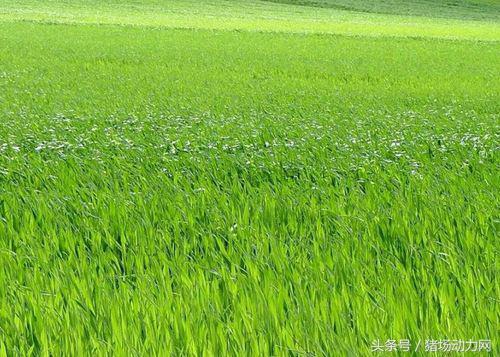
Land for supporting grass cultivation. The farm strictly separates manure from urine, and the manure is sold to planting enterprises after accumulation and fermentation. About 50 tons of sewage is consumed by 50 mu of matched pasture land every day. The pasture in pig diet can reach 44%. Each pig needs to eat 400 kg of fresh grass and 140 kg of concentrate. After feeding for 108 days, the weight increases from 33 kg to 85 kg and the weight increases by 52 kg. It is beneficial to the growth and development of meat pigs. Consumption of dry matter conversion efficiency does not have a negative impact. The pigs fed with forage had heavy water content and insufficient energy intake, so they should adapt to increase energy feed in concentrate to make it close to nutritional standard. All the harvested herbage is fed fresh, and the moistening grass and ryegrass are fed directly. The bamboo grass should be crushed by a forage grinder and mixed with a small amount of concentrate (corn flour, etc.) to absorb the juice of the herbage before feeding. Pasture pig model, pasture-pig-biogas slurry should be dried before feeding. Pigs are fed 2 - 3 times a day. Male (female) pigs and fattening pigs can be fed twice a day, piglets and growing pigs can be fed three times a day. Feeding should be timed to avoid midday when the weather is hottest and when people are most active.
Forage-pig-biogas slurry flow:
01. Install sewage transportation pipelines, pumps and sprinkler irrigation facilities from biogas slurry ponds to pastures;
02. Install treated water collection pipes from pasture to oxidation pond;
03. Install forage processing machinery to crush forage with high crude cellulose content and high straw hardness;
04. Supporting other equipment, including tools for harvesting and transporting herbage.
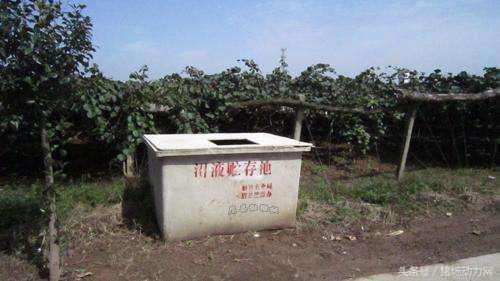
The method of first green and then fine can be adopted, that is, feeding grass first, and feeding concentrate only when pigs are mostly full; it can also be adopted first fine and then green, that is, feeding concentrate first, feeding green feed only after concentrate is eaten, and letting green feed be freely eaten. When feeding forage grass, cut the forage grass into short segments of 2 cm ~3 cm first, or feed the whole plant.
Biogas slurry water comprehensively treated by biogas project needs to be stored in sewage storage tank. The capacity of general storage tank should reach 30 days of sewage discharge, which is conducive to re-precipitation and fermentation of sewage, and is also conducive to storing sewage in cold winter and rainy season. For example, the actual sewage discharged from this farm is about 50 tons per day, so it is necessary to build a sewage sedimentation tank of 1500 tons; the water after grass consumption may not be completely discharged up to standard, so it is necessary to further absorb and consume it in a supporting oxidation pond. The collected water is used for fish culture, green duckweed cultivation, or as a cleaning pen to realize the production goal of zero discharge to the outside world.
Always maintain adequate, clean water, generally unrestricted water consumption, let pigs drink freely. Do not replace drinking water with thin feed, otherwise it will cause unnecessary waste of feed. Drinking water equipment to automatic drinking water is good. If the pig farm is large, or some areas lack fresh pasture in winter, it can be solved by means of pasture silage. Improve the reproductive performance of sows. All the grass grown in this farm is used to feed male and female pigs to maintain good health.
The survival rate of suckling pigs was 95.50%, the survival rate of piglets in nursery period was 98.12%, the survival rate of meat pigs in fattening period was 98.80%, and the survival rate of pigs in whole process was 92.58%. According to the statistics of the first three months, the average survival rate of piglets was 95.80%, the survival rate of piglets in nursery period was 98.72%, the survival rate of meat pigs in fattening period was 98.75%, the whole slaughter rate was 93.39%, the average slaughter weight of commercial pigs was 102.5 kg, and the feeding period was shortened to 165 days.
Sows save on feeding costs. The annual average daily forage feeding amount of each sow is about 5 kg, and the replacement amount of concentrate and green feed is calculated as 10:1. In fact, each sow can save 0.5 kg of concentrate per day. The feed price of sow is calculated as 2.0 yuan/kg, and the feed cost of 500 sows can be saved by 182,500 yuan per year. Silage bags are made of 0.2 mm thick nontoxic plastic film. When the silage is bagged, the silage raw materials are dried, the water content is controlled at about 60% to 80%, the raw materials are cut into about 2cm to 6cm (ryegrass 4cm to 6cm), the chopped silage raw materials are put into silage bags, the silage bags are packed layer by layer and pressed tightly, and the silage bags are sealed tightly after being filled, so that the silage raw materials are sealed and not ventilated. Be careful not to fill the silage bag too full to avoid bursting it. After bagging, do not move, so as not to damage the plastic film. Attention should be paid to rat prevention during storage.
Adopting the mode of "pig-biogas slurry-pasture" can not only effectively absorb pig excreta, protect ecological environment, but also improve pig production level and health level, reduce production cost, produce significant ecological benefits and good economic benefits. As for how much economic benefits can be obtained, it is also related to the level of pig farm management. Generally, pig farms with lower production level will produce greater benefits. The effect of forage replacing concentrate in feeding commercial pigs also needs to be practiced.
Forage pig model, forage-pig-biogas slurry silage extraction, silage after 40 to 50 days of storage, can be used. When taking silage from ground storage and silage moat, take it from one end first and take it gradually. Do not open it completely. Seal it in time after use. Feed silage on the same day, feed silage on the same day. Tower storage is generally layered from top to bottom. Bag storage is divided into bags for use, after use sealed bag. Whether the pig sewage without anaerobic treatment can be absorbed by planting grass, or how much grass area can be used to absorb pig excrement (the ratio of pig feeding quantity to grass planting area), still needs further practice and time test. The capacity of the supporting sedimentation tank can be determined according to the geographical location of the breeding site, the production scale and the way of excreta disposal (the sedimentation tank in this field is too large).
Ground storage ground storage should be selected higher and flat plots, with cement ground, loess compacted ground or plastic film paved ground. Then the silage raw materials are chopped and stacked layer by layer on the top, compacted with the pile (available tractor compaction), the stacking material should not be too high, generally not more than 3 meters; covered with a complete plastic film, 50 cm ~60 cm wide around the contact with the ground and compacted with fine sand to ensure that the silage is isolated from the outside air.
Pasture pig raising mode, pasture-pig-biogas slurry In the middle of winter, low temperature, slow growth of pasture or grass season, excreta should be stored more, less sprinkler irrigation is better, reduce the loss; winter pasture shortage can try to use silage pasture to solve the problem of male sow pasture.
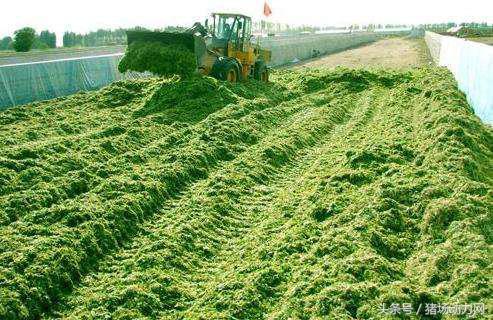
Before silage is used for livestock, sensory evaluation should be carried out in terms of smell, color, etc., in order to determine whether it can be fed. In the forage pig-raising mode, the forage-pig-biogas slurry silage has a slight sour taste and wine fragrance, the color is green or yellow-green, no grayish black or brown mildew, the hand feeling is loose, soft and not sticky, so it is a high-quality silage, which can be safely used for raising livestock. If silage has a stale mouldy smell, is black or brown in color, and feels lumpy or sticky when grasped by hand, the silage has deteriorated and cannot be used for livestock.
Pasture pig farming mode, pasture-pig-biogas slurry By renting land around the pig farm and planting pasture with biogas slurry, not only the pollution source is eliminated, the emission standard is reached, but also the environment around the pig farm is greatly improved, and the ecological benefit is very outstanding. Especially in this ecological model, more than 50 mu of supporting land is used to consume sewage from 5700 pigs, with an average consumption of more than 100 pigs per mu of land, breaking the frame that only 3-4 pig manure urine can be consumed per mu of land, and playing a demonstration role for fields (households) lacking consumption land.
This issue topic: How much can you control your cost per head? What are your tips for saving costs?
- Prev
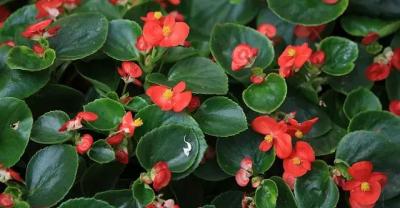
Tenebrio molitor breeding costs and benefits: breeding Tenebrio molitor prospects, Tenebrio molitor price how much a catty
With Premier Li Keqiang's proposal, the development of the Internet technology circle is in full swing. I often have friends in the breeding circle who ask me in WeChat: No breeding...
- Next
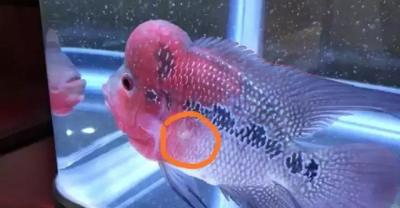
Polyaluminum chloride manufacturers share the secret of "raising water first" aquaculture
The water body is the environment in which fish and shrimp grow, live and live. However, the interaction between pond sediment and water may strongly affect the water.
Related
- On the eggshell is a badge full of pride. British Poultry Egg Market and Consumer observation
- British study: 72% of Britons are willing to buy native eggs raised by insects
- Guidelines for friendly egg production revised the increase of space in chicken sheds can not be forced to change feathers and lay eggs.
- Risk of delay in customs clearance Australia suspends lobster exports to China
- Pig semen-the Vector of virus Transmission (4)
- Pig semen-the Vector of virus Transmission (3)
- Five common causes of difficult control of classical swine fever in clinic and their countermeasures
- Foot-and-mouth disease is the most effective way to prevent it!
- PED is the number one killer of piglets and has to be guarded against in autumn and winter.
- What is "yellow fat pig"? Have you ever heard the pig collector talk about "yellow fat pig"?

